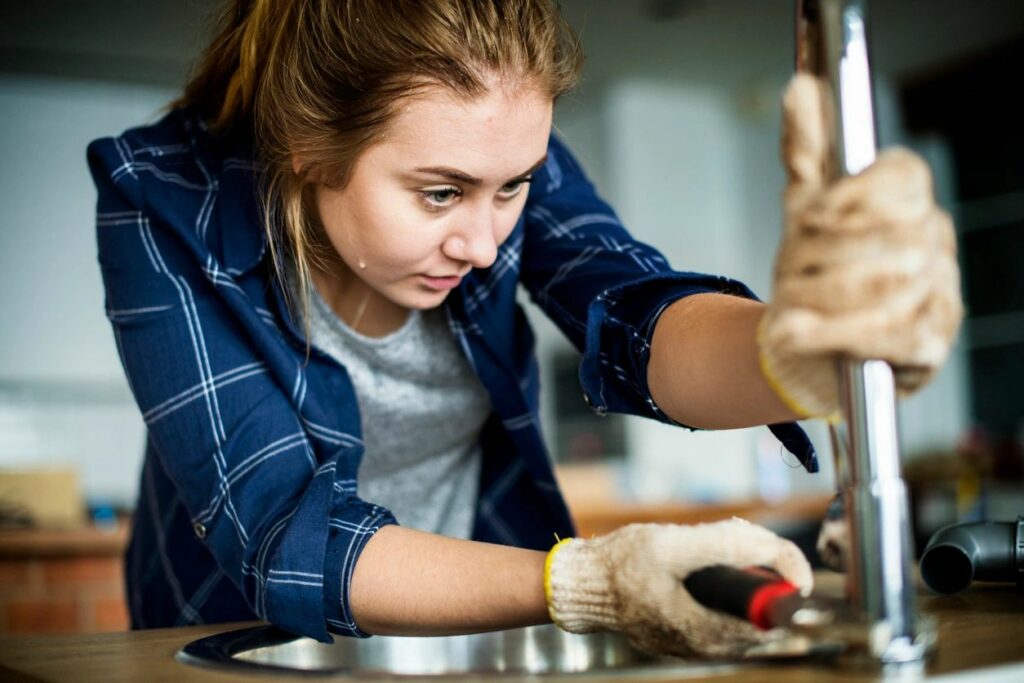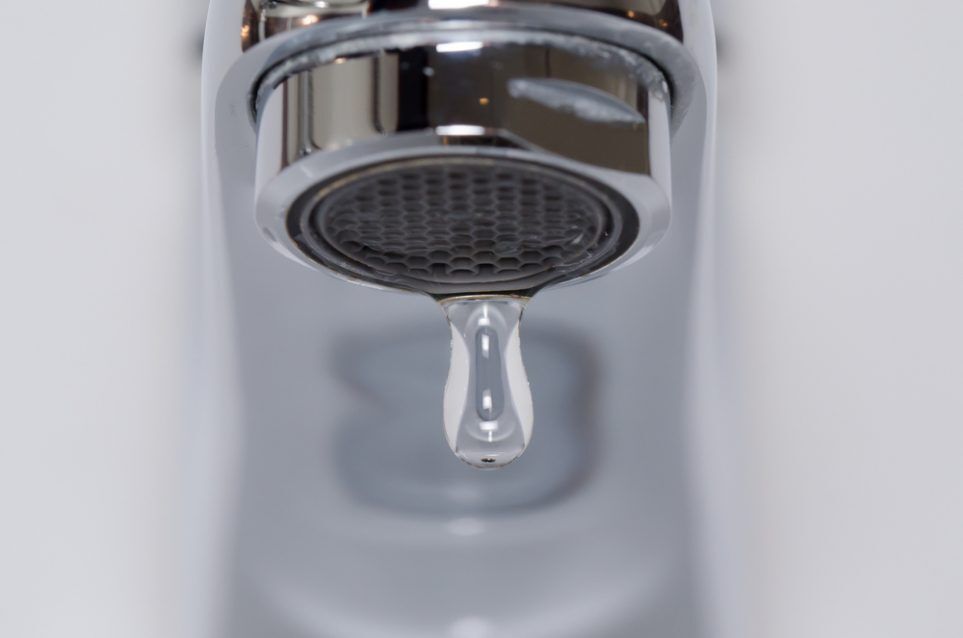Learning the Value of Resolving a Leaking Faucet
Learning the Value of Resolving a Leaking Faucet
Blog Article
How do you actually feel in relation to Why Are My Faucets Dripping (And Can I Fix It Myself)??

Dripping taps might appear like a minor aggravation, yet their effect goes beyond simply the inconvenience of the audio. From wasting water to sustaining unnecessary monetary costs and health and wellness risks, neglecting a dripping faucet can lead to numerous consequences. In this write-up, we'll delve into why it's critical to address this typical house problem without delay and efficiently.
Wastage of Water
Ecological Impact
Dripping taps add considerably to water wastefulness. According to the Environmental Protection Agency (EPA), a solitary tap dripping at one drip per second can throw away more than 3,000 gallons of water annually. This not just strains water resources yet also impacts ecosystems and wildlife based on them.
Step-by-Step Overview to Repairing a Dripping Tap
Devices Called for
Before attempting to repair a leaking tap, gather the required devices, consisting of an adjustable wrench, screwdrivers, replacement parts (such as washers or cartridges), and plumber's tape.
Usual Tap Issues and Their Solutions
Identify the type of faucet and the certain concern creating the drip. Common problems include worn-out washers, rusty shutoff seats, or damaged O-rings. Describe supplier instructions or online tutorials for step-by-step assistance on repair services.
Financial Expenses
Raised Water Bills
Past the environmental impact, dripping faucets can inflate water bills substantially. The built up wastage in time equates into higher utility expenses, which could have been avoided with prompt repairs.
Possible Residential Or Commercial Property Damage
Furthermore, prolonged dripping can bring about harm to components and surfaces surrounding the faucet. Water build-up can cause staining, deterioration, and also architectural problems if left unattended, resulting in added repair service prices.
Health and wellness Worries
Mold And Mildew and Mildew Development
The continuous existence of wetness from a dripping tap produces an optimal environment for mold and mildew and mold growth. These fungis not only compromise indoor air top quality yet likewise pose wellness dangers, particularly for people with breathing problems or allergies.
Waterborne Diseases
Stationary water in dripping taps can end up being a breeding ground for bacteria and various other pathogens, raising the danger of waterborne conditions. Pollutants such as Legionella bacteria prosper in stagnant water, possibly resulting in serious health problems when ingested or breathed in.
Do it yourself vs. Professional Repair service
Advantages and disadvantages of Do It Yourself Repair Work
While some might attempt to take care of a dripping tap themselves, DIY repair services feature their own collection of challenges. Without correct understanding and tools, DIY attempts can worsen the concern or result in insufficient repair services, prolonging the issue.
Benefits of Hiring an Expert Plumber
Employing a specialist plumber guarantees that the underlying root cause of the trickling faucet is resolved properly. Plumbers have the proficiency and devices to detect and repair faucet problems successfully, saving time and reducing the danger of additional damage.
Environmental Obligation
Private Payment to Preservation
Taking duty for fixing dripping faucets lines up with broader efforts toward water preservation and environmental sustainability. Every individual's actions collectively make a significant effect on protecting valuable resources.
Sustainable Living Practices
By prioritizing timely repair services and taking on water-saving habits, individuals contribute to sustainable living practices that profit both existing and future generations.
Safety nets
Routine Upkeep Tips
To stop trickling faucets, do regular maintenance such as cleaning aerators, inspecting for leakages, and changing damaged components immediately. Furthermore, think about installing water-saving devices or updating to extra effective fixtures.
Significance of Prompt Repair Works
Dealing with dripping taps as quickly as they're discovered avoids further water wastefulness and prospective damage, ultimately conserving both water and money in the long run.
Influence On Residential Or Commercial Property Worth
Assumption of Well-Maintained Residential Property
Preserving a home in good condition, including resolving upkeep issues like trickling faucets, enhances its regarded value and worth among possible purchasers or renters.
Impact on Resale Value
Characteristics with properly maintained plumbing fixtures, consisting of faucets, command greater resale worths in the real estate market. Resolving dripping taps can contribute to a positive impact during residential or commercial property examinations and settlements.
Verdict
Dealing with a trickling faucet surpasses mere comfort; it's an important action toward saving water, lowering monetary prices, and protecting wellness and home. Whether via DIY repair services or specialist support, acting to fix leaking taps is a tiny yet impactful way to advertise liable stewardship of sources and add to a healthier, a lot more lasting future.
How to Fix a Leaky Faucet: Step-by-Step Repair Guide
A leaky faucet may seem like a simple annoyance, but if it's not fixed promptly, that leak could cost hundreds to potentially thousands. From water damage to mold, mildew, and high water bills, even a tiny leak can be catastrophic if left unattended. Damage like this can even affect the overall value of your home, so it's important to take the right approach for leaky faucet repair. You may need the help of a plumber in some cases, but we've got a few tips you can try on how to fix a leaky faucet before calling the pros.
Four Faucet Types
When you're learning how to fix a leaky faucet, the first step is knowing what kind of faucet you're working with! There are four common types.
Cartridge Faucets
Cartridge faucets come in one- or two-handled varieties. In one-handled cartridge faucets, hot and cold water combines in a single cartridge. In the two-handled versions, hot and cold water are controlled separately and mixed in the faucet.
Ball Faucets
Ball faucets have a single lever you push up and down to adjust the pressure and rotate to change the temperature. A slotted metal ball controls the amount of water allowed into the spout.
Compression Washer Faucets
They're the oldest type of faucet, but they're still used in many homes — especially older ones. Compression faucets have two separate handles that, when turned, raise or lower the washer that seals a water valve. This valve stops water from flowing through the faucet when it is turned off.
Disc Faucets
Disc faucets rarely need to be repaired due to their maintenance-free design. The water flow is controlled by two discs — the upper one raises and lowers against a fixed lower disc, creating a watertight seal. If your disc faucet starts leaking, you may need to replace the seals or clean residue buildup from the inlets.
Fixing a Leaky Faucet
Step 1: Turn Off the Water
Whether you're learning how to fix a leaky bathtub faucet or how to fix a leaky kitchen faucet, always turn off the water supply to your working area when you're fixing a leak. The last thing you want is a flood added to your list of things to fix.
Look for the shutoff valves below your sink or around the tub and turn them clockwise to stop the water flow. If your faucet doesn't have shutoff valves, you may need to turn off the water for the whole house. Check to make sure it's off by turning the faucet on. If nothing comes out, you're ready to start the repair.
Step 2: Take Apart the Faucet
How you disassemble your faucet depends on the type of fixture you have. You can use a flathead screwdriver to remove the caps on top of the handle or handles for cartridge and compression faucets. Inside, you should see handle screws. Unscrew these with a screwdriver to remove the handle.
Disc- and ball-style faucets will typically have an inlet screw near the handle, and removing that will reveal the interior of the faucet.
Detach the Valve Stem
For cartridge- and compression-style faucets, you'll see the inner valve stem or cartridge once you remove the faucet handles. If you have a compression faucet, unscrew the brass valve stem. If you have a cartridge faucet, pull out the cartridge. If your cartridge has been in place for a while, it may require some tools or extra force to remove it due to mineral deposits.
Examine and Replace Parts
Once you've removed the parts, check them out to confirm what needs to be replaced. You may see corroded rubber washers, O-rings, stems, or cartridges. On a ball-style faucet, check the seats and springs for damage.
If you need to repair a leaky disc faucet, check the inlet and seals on the lower disc.
Once you determine what parts must be replaced, visit your local hardware store. Bring the damaged parts with you to ensure you can purchase the correct components to replace them.
Clean Valves and Faucet Cavity
If you've removed a stem or cartridge, you may notice mineral buildup in the faucet's threads. Use white vinegar to clean the valve seat by soaking it for a few minutes, then scrub it away with a soft toothbrush and rinse with warm water. You can also clean the interior of the faucet in the same way.
Reassemble the Faucet
Once your faucet is cleaned and the required parts have been replaced, it's time to reassemble it. Put the pieces back together and slowly turn the water supply back on. Doing this slowly is crucial because too much initial water pressure can damage the new hardware you've just installed.
https://homewarranty.firstam.com/blog/how-to-fix-leaky-faucet

As a passionate reader on Water Dripping from Faucet: Why and How to Fix, I assumed sharing that segment was worth the trouble. Sharing is good. You never know, you might be doing someone a favor. We value your readership.
Report this page